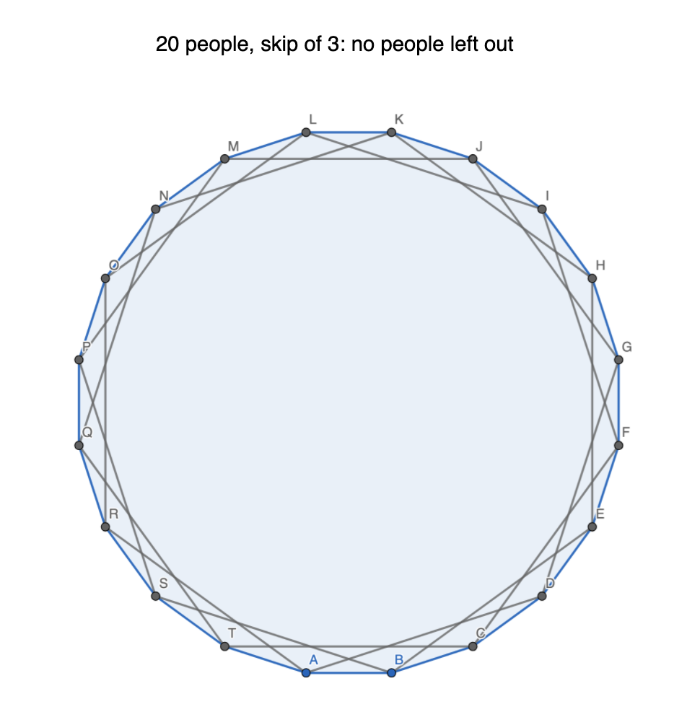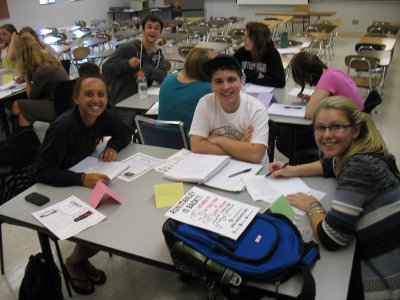Teaching IBL in a Remote Setting
Written by: Dr. Christine von Renesse and Dr. Volker Ecke.
Intro
This blog is a means for us to write about some of the resources and experiences we have had with moving our inquiry-based classes online to a synchronous remote format. We could write in detail how we set up our classes, but you can find a great detailed description by Stan Yoshinonbu that hits most of what we did right here.
So we will use this space to add some more solutions that worked well for us, as well as challenges that we have faced.
You can also read about the experience of 5 instructors teaching Linear Algebra this Spring in a sequence of short blogs on our New England IBL Community Blog. You will find engagement ideas like 1-2-3-GO to share in the chat, as well as picking random students to talk in whole class zoom discussions.
Assessment
Online assessment can be challenging, especially if you are worried about cheating students. Using specifications based grading or mastery based grading can be a huge help with that struggle. Resources: Mastery Grading Conference with Models from many courses and instructors, DAoM Blog on Specs Grading, and Debra Borkovitz' blog on using mastery grading.
The big idea is that if students can redo their work they are much less likely to cheat!
Tools
We assume that most of you are familiar with these tools, but if not: we have used desmos, geogebra, sage, google docs and jamboards heavily in our online math facilitation. Likewise, electronic books (even better if they are free!) were a huge help in going online, proving additional structure and support for the students: Active Calculus, Understanding Linear Algebra, Math for Elementary Education, etc.
Check out the OER Commons: Mathematics Textbooks section for specific resources for your courses.
DAoM Online
So far we have successfully used star polygons (patterns book and dance book), islamic art, the penny and paperclip game (hex could work the same way; games book) and the Pythagorean theorem explorations (patterns book) online. We assume that many more can be done. We struggle with imagining how to use some of the dance activities, as well as the Rubik’s cube without being in person, but who knows what’s possible? Let us know if you have found ways to do these remotely.
Community Building
We are teaching online synchronously again this fall, and some of the “new” elements we have to think about are community building and student buy-in. We hope that video programs like flipgrid (obsolete in 2025) or voicethread can help with maintaining a sense of community. But how do we build the community feeling? How do we convince students to work hard and mess up if we can’t be right next to them supporting them emotionally? Ice-breakers, journal entries, sharing mistakes and struggles, and frequent small group work in and outside of class should help. One-on-one or small group meetings with the professor outside of class can also help in establishing trust between us and the students.
Creating Groups
During in-person teaching we like to change up groups until groups become more stable later in the semester; see our blog on Strategies for Grouping Students. Going online, it seems even more relevant to establish stable groups that create a support group for students, mathematically and otherwise. But how do we as a class community know who works well with who if we do not change it up? So frequently changing groups of 3-4 students would be good. At the same time, larger groups of 5-6 students are helpful in zoom meetings as some students have tech issues or may not be able to attend. It will be interesting to see what works best.
Students Missing Classes & Participation Grades
In the Spring we did not grade participation for the online portion as no one had signed up to go online. We could not expect that students had the technology or space to show up. In the fall, we would like to grade participation again so that we can guarantee that students actively do mathematics during class. But what if a student misses a class? One idea is to take the recording of the class session and add quizzes to it that students have to do before they can keep watching. The record of these quizzes can then count as participation. We hope that these video+quiz sessions are much less fun than attending the real class, so that students will be motivated to show up and work.
A word about equity
The covid-19 pandemic hit students in different ways. We noticed that in particular Black students and students from lower socio-economic backgrounds were suddenly faced with many more struggles and responsibilities. When parents are working at a local prison, families get covid-19 and parts of the family need to isolate, when students need to work more because someone in the family lost their job, when there is no access to internet in their area, to name just a few examples, we can not expect that our students just keep studying in the same way. We supported our struggling students by listening to their stories and by offering lots of flexibility: more one-on-one meetings, flexible deadlines, etc. But of course, more needs to be done and we keep thinking about how to support our students better in the upcoming semester.
Collaborate in Lunch Meetings with Colleagues
One avenue that has been helpful for us personally to connect and learn with other faculty about ideas and tools for teaching online has been the online series of “Lunch Meetings” organized by the New England Consortium for Inquiry-based Learning in Mathematics (NE-IBLM, ne-commit.org). We believe that such a "Lunch Meeting" structure could be easily replicated by any group of faculty around some common interests, given that we find the organizational overhead to be fairly low.
If you want to connect with an IBL Community or COMMIT in your region (or help found one), check out the COMMIT network.
What is needed
At the start of the summer, the NE-IBLM leadership team realized that there was great hunger among the membership for some kind of professional learning opportunities in order to prepare for the fall semester in the wake of the COVID-19 pandemic. To learn what kind of format and what kind of content focus would be most helpful to the community, a brief survey was organized. It showed that a series of “lunch meetings” would best fit people’s schedules, and highlighted areas of common interest:
- Reflect on spring, plan for summer.
- Asynchronous versus synchronous in general as choices
- Assessment
- Engaging students
- Nuts and Bolts Work Group
A meeting on anti-racist work and inclusive pedagogy was added later, in the wake of George Floyd’s killing by Minneapolis police.
Format
The format of the lunch meetings evolved over time, from mostly whole group discussions to mostly small group conversations in break-out rooms. It was helpful to seed the discussions by creating a number of reflection questions for participants to consider, sent via email before the actual meeting.
You don't need to be an expert at all to facilitate these meetings! The main role for the organizer / facilitator in the meeting was to welcome everybody and identify a good way of grouping participants. Sometimes, making all the participants into “co-hosts” and allowing them to choose their own group (and switch groups) is a flexible way of empowering the participants to make the best use of the collaboration.
Facilitator actions
- Think up some reflection questions to seed the discussion.
- Set up Video meeting and shared documents as needed (Google Doc, Jamboard, …)
- Welcome people to the Video meeting (look out for and welcome people new to the group).
- Send people into groups (or make them co-hosts so they can move themselves).
- Rotate among the groups (it can be helpful for the group to choose a moderator, scribe)
- Bring people back together for some high-level sharing once or twice.
- Maybe offer an opportunity to provide feedback (e.g. Google Form) to learn how things went.





